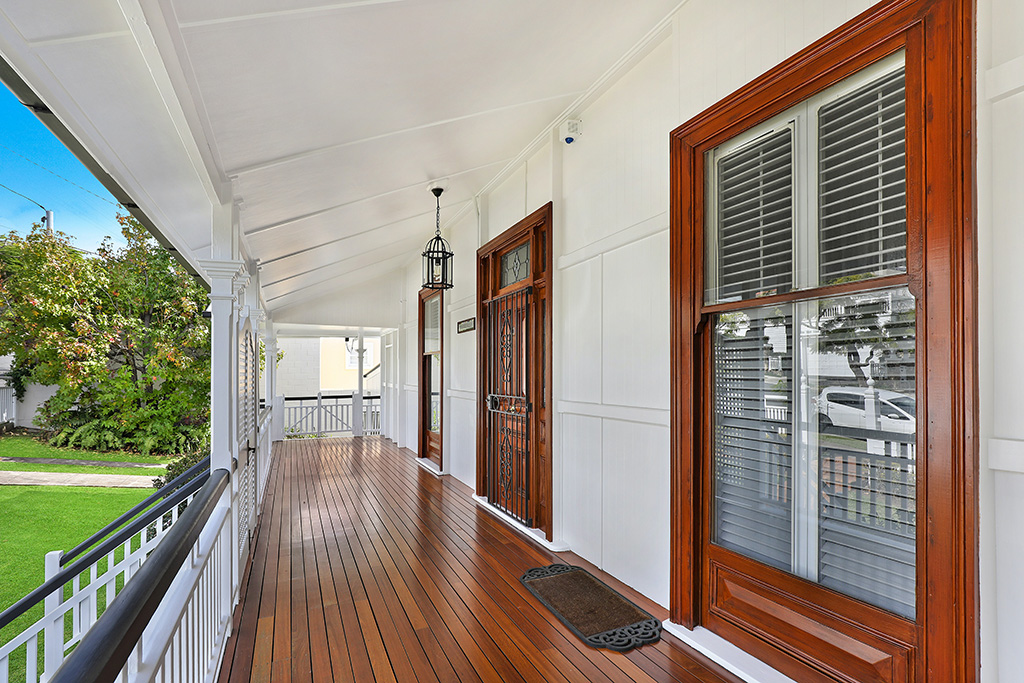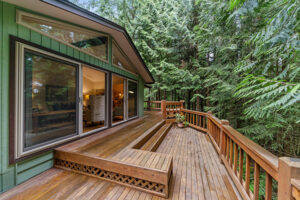
Ask Woodiwiss: What’s the difference between staining and painting?
Don’t let the simplicity of this question fool you. There are significant design, environment, and application decisions around whether to paint or stain. And the difference between paint and stain includes a different amount of preparation. There’s a lot to ask:
- Are you applying paint or stain indoors or outdoors?
- Is it a deck or patio or gazebo or fence? Horizontal vs. vertical surfaces make a difference.
- Do you want to see the natural elements of the surface, or cover them up, and by how much?
- Does the existing surface need re-coated? Cleaned? Stripped entirely?
- Do you need water or oil-based paint?
- How much longevity do you need?
- What’s easier to maintain?
Stains change the wood, paint sits on top
When you apply stain to a surface, you’re altering the wood since wood is an absorbent surface and stain soaks into it.
Paint lies on top and covers up the surface of the wood. Unlike paint, stain tends to blend easier with the existing surface. Stain also shows more grain and it’s usually easier to apply more stain later. For instance, if your deck gets stained this year and you need to use one coat later because the dog scratched up the surface, you can probably get away with that using stain.
About solid stains, transparency, semi-transparency, and longevity
 Stains consist of a pigment, dye, and a carrier, which is either oil or water-based. The pigment and dye give it color, and the amount of pigment and dye can make it work like paint.
Stains consist of a pigment, dye, and a carrier, which is either oil or water-based. The pigment and dye give it color, and the amount of pigment and dye can make it work like paint.
If you want more wood surface visible or a more natural look, go with a semi-transparent or transparent stain. They contain fewer pigments and dyes than a solid stain. Semi-transparent and transparent stains are also easier to apply later for touch-ups than a solid stain since color uniformity is easier to achieve.
- Paint and stain provide protection and water resistance, but paint lasts longer than a stain.
- On average, paint can last up to ten years, especially on surfaces like gazebos, fences, and rails that don’t get touched often.
- Stain will last about two or three years depending on various degrees of wear and tear, but the more pigment it has, the more protection you get—sometimes up to eight years when applied properly.
- Stain is easier to apply unless you’re working with previously painted surfaces. Once a surface is painted, all of the paint has to be removed before it can be stained—which requires a lot of work before you can apply any stain.
Woodiwiss Painting crews get a stain to last by ensuring the primed surface is clean, sanded, and gets at least two coats.
Painting gives you a much different finished look
 Paint sits on the top of wood like a blanket. Think of stain more like a thin film that soaks into the surface. This is why paint is better for longer-lasting protection at the cost of covering the natural aesthetic of wood surfaces.
Paint sits on the top of wood like a blanket. Think of stain more like a thin film that soaks into the surface. This is why paint is better for longer-lasting protection at the cost of covering the natural aesthetic of wood surfaces.
Paint does chip over time, especially in Walnut Creek and the Bay Area that gets a lot of sunshine and foot traffic. This is why vertical surfaces like fences will generally last longer than a deck. Blowing dust also contributes to the degradation of painted surfaces.
- Paint usually requires fewer coats than even solid stains, but is also dependent on what’s already on the wood surfaces.
- Paint gives you a broader color range to choose from ince paint can be anything from orange to white or black.
- Paint provides options for more sheens. Stain is rarely “shiny” or glossy like paint, even among solid stain.
- Paint doesn’t resist cracking as much as stain, but an oil-based coat will last longer than water-based paint and give you more resistance to UV rays and moisture. And in many places, only one coat is necessary to re-coat surfaces and for touch-ups season-to-season.
Our professional painters at Woodiwiss Painting can help you choose paint colors and prime surfaces. Unlike stain, paint can drip and glom on and form bumps when applied improperly. Stain gives you a more even finish, but both are beautiful when applied correctly, depending on your taste.
Get started with stain and paint on your next project
The main difference between paint and stain is whether you want more of the natural wood grain to show through or not. That’s a question of personal taste since most of the weather around us in Orinda, Pleasant Hill, and Alamo isn’t as abusive as elsewhere in the country and doesn’t impact longevity as severely.
Woodiwiss Painting can help by ensuring your surface preparation is perfect, help you choose stain and paint, apply it cleanly, efficiently, and ensure it lasts for 15 or more years.
